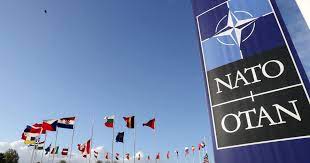Jan Oberg, Benyamin Poghosyan & Xiang Haoyu
NATO’s summit will be held in Vilnius, Lithuania, on July 11-12. Exactly 26 years ago – on July 8-9, 1997-NATO at its summit in Madrid approved the “Founding Act on Mutual Relations, Cooperation and Security between NATO and the Russian Federation”, in other words, a permanent NATO-Russia forum was signed by then Russian president Boris Yeltsin and then United States president Bill Clinton in Paris on May 27, 1997.
M.E. Sarotte’s brilliant 550-page analysis, Not One Inch. America, Russia, and the Making of Post-Cold War Stalemate, can be read as an illustration of how the US, and thereby NATO, has been acting as the big-brother and manipulating against Russia. The fact is, for the US, Russia was never meant to become an equal partner, as irrespective of the Russian concerns taken into account, the US and NATO always intended to promote their own interests in what was, and remains, a very asymmetrical relationship.
While Yeltsin promoted the “founding act” as a boost for Russia, Clinton saw it as a sugar-coated pill for Russia to swallow NATO’s expansion. What we know about the upcoming Vilnius Summit so far offers no indication that NATO has learned any lessons or would rethink its policy in light of Russia’s heightened concerns over the past more than a quarter of a century, not to speak of the Russia-Ukraine conflict.
Sarotte takes the reader through all the documentation to show that then Soviet leader Mikhail Gorbachev was indeed given promises that NATO would not expand even “one inch” if it acknowledged a unified Germany as a full NATO member. It was not written into a treaty, but the “cascading” documentation, especially in the National Security Archive at George Washington University, is overwhelming nonetheless. Sarotte explains the entire process of NATO’s expansion policy at the time and concludes on page 261: “Although the US President did not say so explicitly, ‘not once inch’ was gaining a new meaning: not one inch was off-limits to the alliance.”
Consider these statements on NATO’s 2023 Vilnius Summit page: “NATO currently faces the most dangerous and unpredictable security environment since the Cold War. How will the Alliance continue to protect its one billion citizens and every inch of Allied territory?… NATO Leaders will meet to address the most pressing challenges for the Alliance, further strengthen NATO’s deterrence and defence and bring Ukraine closer to the Alliance.” Yet NATO does not have the moral or intellectual integrity to ask itself the most important question: Why?
The statement, “bring Ukraine closer to the Alliance”, that is, making Ukraine a full NATO member, and the three decades of NATO in Ukraine ignore the fact that in all opinion polls before the Russia-Ukraine conflict broke out, only a tiny minority of Ukrainians was in favor of NATO membership. On the other hand, almost 70 percent of Ukrainians were in favor of holding a referendum to decide Ukraine’s future relations with Russia, NATO and the European Union. But neither NATO nor Ukrainian leaders showed any respect for the Ukrainian people’s opinions. One is reminded of a former NATO secretary-general’s reckless answer to a recent question about how he thought Russia would react to his proposal to deploy some NATO troops on Ukrainian territory: “I don’t care!”
Or, take for instance, the US secretary of defense’s statement that the aim of the US and NATO is to weaken Russia militarily and economically so it never becomes “a problem” again – or NATO’s desperate attempts to contain China, which the transatlantic alliance sees as a challenge only because Chinese values and interests are different from those of NATO. This brings us to another trend, which is never highlighted in Western mainstream media: NATO’s daily violation of its own 1949 treaty provisions and its global expansion.
As for the North Atlantic Treaty Organization, which few bother to read, it is, for all practical purposes, a copy of the UN Charter to which Article 5 on mutual defense among its European members has been added. It is distinctly defensive in nature. But the aggressive and provocative, not at all “defensive”, alliance has been violating the very treaty it is based on since 1999 when it committed the first violation by conducting out-of-area operations in what was then Yugoslavia. Those actions were incidentally based on lies that a genocide was taking place in Kosovo and former Yugoslav president Slobodan Milosevic was, in Clinton’s words, Europe’s new Hitler. But what will happen when NATO has no more European states to add to its members’ list – the only raison d’etre of NATO today? Then it will invent a new category – partners – that is not in the NATO treaty, something which it has already done. NATO today has 31 members, as Sweden is not mentioned in NATO’s Vilnius Summit page, but 39 partner states. NATO also plans to open an office in Tokyo which, along with AUKUS, it intends to use to continue meddling in cross-Taiwan Strait relations and contain China.
What we are seeing is rampant militarism that “doesn’t care” about the other side or about the consequences of its own provocative policies which are devoid of empathy, prudence and statesmanship. There are enough reasons to see militarism as the glue that binds NATO and EU countries, although that may not last long.
Making oneself strong in one aspect while losing out on all other power dimensions – diplomacy, economy, legality, creativity, vision and culture – is a recipe for disaster. NATO no longer argues or analyses; it postulates and judges everybody except itself. It’s highly disturbing that NATO’s increasing militarism is not opposed but largely tacitly accepted as the “new normal” by the media and in research, with the latter basically financed by NATO governments. Apart from a tiny group of critical NATO scholars, the vitally important discourse on war and peace – in an attempt to promote democracy – has been silenced and peace studies scrapped, mainstreamed or turned into “security” studies. If NATO “wins” this game after being largely responsible for “the most dangerous and unpredictable security environment since the Cold War”, the rest of the world will likely be pushed toward an eschatological moment.
Peace workers and researchers ought to have more to say than it has hitherto. The North Atlantic Treaty Organization was established at the dawn of the Cold War in 1949. The transatlantic military alliance was formed “to keep the Russians out, the Americans in, and the Germans down”, as NATO’s first secretary-general Hastings Lionel Ismay said. NATO was established to perpetuate the US’ military hegemony over Western Europe, provide a US security umbrella for the Europeans and make them dependent on the US for security-related issues. Initially, NATO comprised 12 countries, but soon Greece and Turkiye (in 1952), and West Germany (in 1955) joined the alliance.
France, incidentally, was always cautious about too much US influence in Europe. In March 1966, France even announced its intention to withdraw from NATO’s integrated military command structure and requested the removal of all Allied headquarters from French territory. A new Supreme Headquarters Allied Powers Europe was established in Casteau, Belgium, in 1967, and the NATO headquarters was moved to Brussels in October of the same year. After the end of the Cold War, the disintegration of the Soviet Union and the dissolution of the Warsaw Pact, NATO lost its primary goal, with many saying that the transatlantic alliance, too, should be dismantled. But under then US president Bill Clinton, Washington pushed forward the idea of NATO’s expansion by including former socialist states into the organization and extending not only NATO’s reach but also US influence over Eastern and Central Europe, even though verbal guarantees were given to the Soviet Union in the late 1980s that after the reunification of Germany, NATO will not expand eastward.
The NATO’s expansion, particularly the April 2008 Bucharest summit decision on the future accession of Ukraine and Georgia into NATO, triggered a new confrontation between Moscow and the West (especially Washington) and is one of the primary reasons for the Russia-Ukraine conflict, which broke out in February 2022. Since NATO’s establishment, many leaders of member states have questioned the necessity of the organization. In November 2019, French President Emmanuel Macron made his famous remark about Europe seeing the “brain death of NATO”, saying Europe should start thinking of itself strategically as a geopolitical power in control of its own destiny.
However, the Russia-Ukraine conflict and the complete rupture of Russia-West relations seem to have injected a new lease of life into NATO. Declaring Russia a strategic threat to the alliance, NATO seeks to give a new meaning to itself, with the US pushing NATO to take a more anti-China approach, inserting into the alliance’s strategic documents anti-China rhetoric and seeking to extend NATO to the Asia-Pacific. NATO plans to open a liaison office in Japan in 2024 to coordinate strategic moves with close partners across the “Indo-Pacific region”, including Australia, the Republic of Korea and New Zealand, while the alliance and Japan plan to strengthen cooperation to tackle cyber threats, disinformation, and emerging and disruptive technologies.
The US seeks to use the Russia-Ukraine conflict to consolidate its hegemonic hold over Europe, sending a clear message to its European members that Europe faces a serious threat from Russia, and China, without a US security umbrella. But despite the US’ efforts to present its policies as fair and necessary, below-the-surface issues continue to define the organization. One such contentious area is the candidate for the next NATO secretary-general’s position. After months of struggle, the NATO states decided to continue with Jens Stoltenberg as secretary-general for another year, which temporarily halts the jockeying between candidates and countries that compete for the White House’s support.
The struggle shows the lack of unanimity in the alliance and, at the same time, proves the role of the US as the ultimate decision-maker of NATO. Japanese Prime Minister Fumio Kishida’s decision to attend the NATO Summit in Vilnius, Lithuania, on July 11-12 is another proof of Japan’s attempt to establish closer ties with the North Atlantic Treaty Organization. To be sure, Japan has been playing an important role in NATO’s eastward expansion and strengthening its military. But since the transatlantic military alliance is a Cold War legacy, Japan-NATO military cooperation will create more turmoil and trigger new confrontations in the region, threatening the security of not only other countries but also Japan.
The Japanese government and NATO have been exchanging high-level visits in recent years and their cooperation has become almost normal and institutionalized. In fact, Japan has been cooperating with NATO for a long time. It became one of NATO’s nine “partners across the globe” in 2008, and the two sides signed the Partnership Interoperability Initiative in 2014. Four years later, in 2018, Japan established a permanent mission and designated an ambassador to NATO. And with the two sides’ cooperation expanding from nontraditional security to traditional security, Japan has been flexing its military muscle.
For example, Japan Maritime Self Defense Force and NATO conducted a joint anti-piracy drill as early as 2014. They also conducted a joint exercise in the Baltic Sea in 2018, and Japan became a contributing participant in NATO’s Cooperative Cyber Defense Centre of Excellence in 2019. Besides, last month, Japan attended a large-scale NATO air exercise called “Air Defender 23”, reflecting its military ambitions. NATO may open a liaison office in Japan, the first of its kind in Asia, although opposed by French President Emmanuel Macron. If established, the office will not only put the two sides’ stamp on a “quasi-alliance” but also signal NATO’s further expansion to the east and push forward the “Indo-Pacific” strategy of the United States, the real driver of NATO.
NATO will use the liaison office as a tool to intensify its interventions in the Asia-Pacific region, and strengthen its security cooperation and alliances with the Republic of Korea, Australia and New Zealand. Also, the NATO office in Tokyo will link the US’ transatlantic and Asia-Pacific alliance system, making it easier for NATO to intervene in Asia-Pacific affairs, as well as lead or participate in multilateral security activities, including cyber attack and defense drills.
Worse, the liaison office could prompt NATO to interfere and intervene in more issues in the Asia-Pacific, triggering camp confrontation and intensifying competition among major countries, which could lead to conflict. It is clear that Japan is deepening ties with NATO to build a more powerful military, become a global military power again and broaden its international influence. Last year, the Kishida government approved the revision of three national security documents, authorizing the country to launch (preemptive)”counterstrikes” on enemy bases. This means Japan is slowly abandoning its pacifist Constitution.
The Japanese government has approved a record defense budget for the 2023 fiscal year and plans to raise the amount to 2 percent of GDP within five years to meet NATO’s 2 percent minimum defense spending requirement. As such, this year’s hefty defense budget is the first step in its five-year, 43-trillion-yen ($315-billion) military spending plan. Needless to say this will disturb the region’s strategic balance and spark a new arms race. Unfortunately, Japan has also been claiming that “today’s Ukraine is tomorrow’s Taiwan” in order to justify NATO’s eastward expansion, while NATO continues to hype up the so-called security threats the Russia-Ukraine conflict has created in East Asia. Also, major European powers, along with Japan and Australia, have been taking part in frequent US-led military drills in the Western Pacific, reflecting their aim to trigger a new Cold War or bloc confrontation so the US could maintain its hegemony.
The Asia-Pacific enjoys stability and economic growth. As a matter of fact, the Asia-Pacific has been driving globalization since the end of the Cold War by, among other things, introducing regional cooperative frameworks such as the Asia-Pacific Economic Cooperation, the Regional Comprehensive Economic Partnership and the Comprehensive and Progressive Agreement for Trans-Pacific Partnership. But NATO’s eastward expansion and the US-led West’s move to draw in Japan as a military alliance partner have ruined the cooperative atmosphere in the Asia-Pacific. And the provocative moves of NATO and Japan pose a serious risk to the hard-won peace and stability in the region. As a major regional economy, Japan’s development and prosperity after the end of World War II are inseparable from the peace and stability in the Asia-Pacific region. By aiding NATO to expand eastward, Japan is deviating from the path of peaceful development, raising the international community’s concerns about history repeating itself.
China Daily







